
Chapter 18 is a part of a text book that is being used for a 100 level history course at a community college.
- Subject:
- History
- Material Type:
- Diagram/Illustration
- Homework/Assignment
- Interactive
- Reading
- Textbook
- Date Added:
- 02/08/2017

Chapter 18 is a part of a text book that is being used for a 100 level history course at a community college.
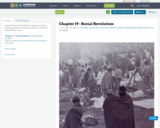
Chapter 19 Social Revolution is a chapter out of a text book being used at a community college for a 100 level college history course.

History Text book Early America
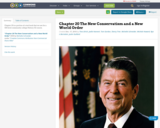
Chapter 20 is a portion of a text book that we use for a 100 level community college History 112 course.

History Text Book Chapter 2 Roots of Colonization
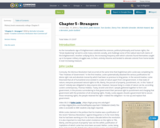
History book community college. Chapter 5
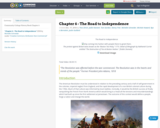
Community College History Book Chapter 6
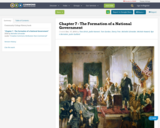
Community College History book
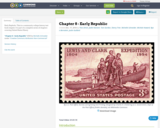
Early Repbulic. This is a community college history text book chapter. It is part of a complete series of chapters covering United States Hisory

This video segment adapted from NASA describes the basic characteristics of our star, the Sun.

This resource is a video abstract of a research paper created by Research Square on behalf of its authors. It provides a synopsis that's easy to understand, and can be used to introduce the topics it covers to students, researchers, and the general public. The video's transcript is also provided in full, with a portion provided below for preview:
"Skin microbes play fundamental roles in maintaining balance in the skin. An imbalance – microbial dysbiosis – is associated with the onset and progression of many common skin diseases. To better understand the functions of skin microbes, a recent study aimed to develop a catalog of skin microbiome reference genes. Using a sample of 822 skin samples from Han Chinese individuals, combined with 538 previously obtained North American samples, researchers constructed the integrated Human Skin Microbial Gene Catalog, or iHSMGC, comprising over 10 million genes. Using the catalog, they found that skin commensals such as Staphylococcus are an important reservoir of antibiotic resistance genes (ARGs). Microbe- and skin site-specific ARG signatures were identified, as were differences between populations. Two patterns of microbial networks – “cutotypes” – were identified in the newly analyzed samples, with Moraxella osloensis and Cutibacterium acnes serving as markers of the cutotypes..."
The rest of the transcript, along with a link to the research itself, is available on the resource itself.

This resource is a video abstract of a research paper created by Research Square on behalf of its authors. It provides a synopsis that's easy to understand, and can be used to introduce the topics it covers to students, researchers, and the general public. The video's transcript is also provided in full, with a portion provided below for preview:
"Bacteria and other microorganisms cover nearly every surface on earth, including the surfaces we build and maintain. Ocean piers are unique sites at the intersection of terrestrial, aquatic, and human-built environments. Saltwater spray, inclement weather, and pollutants make piers a harsh environment for bacteria. Together, these factors suggest that piers house a unique microbiome. Researchers recently conducted a study to characterize the microbiomes found on pier surfaces. On nine piers along the coast of Hong Kong, the researchers found diverse microbiomes that were rich in novel bacterial species. Surface material (metal versus concrete) was the strongest factor influencing the bacterial community structure. Although the overall abundance was low, corrosion-associated bacteria were more prevalent on metal surfaces, and high-touch surfaces like handrails and poles had more human skin-associated microbes than other surfaces..."
The rest of the transcript, along with a link to the research itself, is available on the resource itself.

This resource is a video abstract of a research paper created by Research Square on behalf of its authors. It provides a synopsis that's easy to understand, and can be used to introduce the topics it covers to students, researchers, and the general public. The video's transcript is also provided in full, with a portion provided below for preview:
"Built environment microbiomes are shaped by their occupants and the outside environment. These microbiomes can have a profound impact on the health of its occupants. The International Space Station (ISS) is a uniquely sealed environment, with only the arrival of crewmembers and supplies introducing new microbes. Monitoring the ISS microbiome is important to ensure astronaut health and spacecraft integrity. So, a recent study used samples from two long-term projects, Microbial Tracking 1 and 2, which sampled the same surfaces over two 14-month-long periods. The ISS surface microbiome was dominated by microbes associated with human skin. The most represented groups were Staphylococcus and Malassezia among bacteria and fungi, respectively. Community abundances shifted over time, but did not differ between surfaces. Overall, the metabolism genes tended towards amino acid utilization rather than carbohydrate metabolism..."
The rest of the transcript, along with a link to the research itself, is available on the resource itself.
![Charity Bazar [i.e., Bazaar] for the Widows and Orphans of German, Austrian, Hungarian and their Allied Soldiers](https://img.oercommons.org/160x134/oercommons/media/upload/materials/screenshots/materials-course-92683.png)
Poster showing pennants and flags above an entrance. Madison Square Garden, New York City, March 11th - March 23d 1916, Admission 25c[ents]. Title from item. Cite as: Gift of Tjark Reiss, Library of Congress, Prints & Photographs Division, Winold Reiss Collection, LC-USZC4-9854. Gift, Tjark Reiss, 1998 (DLC/PP-1998:055) Forms part of: Winold Reiss Collection (Library of Congress)

This resource is a video abstract of a research paper created by Research Square on behalf of its authors. It provides a synopsis that's easy to understand, and can be used to introduce the topics it covers to students, researchers, and the general public. The video's transcript is also provided in full, with a portion provided below for preview:
"The development of long-read sequencing has allowed for the generation of more complete and contiguous genomes in metagenomics studies. However, long-reads are more prone to sequencing errors than short-reads, and these errors can end up incorporated in the draft genomes. Combining short- and long-reads can overcome such errors, but is computationally taxing. To avoid this, researchers developed the ‘Hierarchical Clustering Based Hybrid Assembly (HCBHA) approach.’ This approach first groups the long- and short-reads into candidate bacterial haplotypes and then assembles each group separately, which reduces the computational demand . Researchers tested this framework on a microbiome from activated sludge, an important part of wastewater treatment. The highly complex microbiomes found in activated sludge remove pollutants from wastewater..."
The rest of the transcript, along with a link to the research itself, is available on the resource itself.
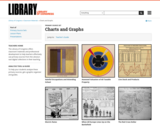
A selection of Library of Congress primary sources exploring charts and graphs. This set also includes a Teachers Guide with historical context and teaching suggestions.
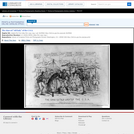
Confederate president Jefferson Davis's capture by Union cavalry on May 10, 1865, while allegedly fleeing in women's clothing, inspired a rash of prints exploiting the tale's comic possibilities. According to Davis's autobiography, at the time of his capture he was wearing his wife's raglan overcoat, which he had mistakenly put on in his haste to leave, and a shawl, which his wife had thrown over his head and shoulders. The Northern press made the most of his "last shift," transforming the shawl to a bonnet, and sometimes even portraying Davis wearing a hoopskirt and full female dress. Since Davis had apparently tried to escape casually with a black servant carrying water, he was often pictured carrying a water bucket. Another detail added by the cartoonists was a Bowie knife. Here the artist shows a camp in the woods where Davis, wearing a dress, shawl, and bonnet, and carrying a water bucket labeled "Mom Davis" and a Bowie knife, is accosted by Union soldiers. One Union soldier (center) lifts Davis's skirt with his saber mocking, "Well, "old mother," boots and whiskers hardly belong to a high-toned Southern lady." Davis implores, "I only wish to be let alone." At right another soldier, speaking in a Germanic accent, says, "Mein Gott, ter "olt mutter" vears ter pig gavalrie poots! . . . " He may be intended to represent the Norwegian-born tanner who first spotted Davis. The soldier at left exclaims, "Jerusalem! her "old Mother," hey! Its ld "Leach'" in petticoats--That's so." Behind Davis a woman warns, "Do not provoke tĚ_Ąhe President,' he might hurt some one." A black youth, presumably Davis's servant, looks on, exclaiming, "Golly Marse Yank, de old Missus is "done gone" shu-ah! . . ." At far right a waiting Confederate carriage containing barrels of "Whiskey" and "Stolen Gold" is visible. This impression was deposited for copyright on June 5, 1865, less than a month after Davis's capture. |Entered . . . 1865 by Oscar H. Harpel, (Opera House, Cincinnati) Ohio.|Signed: Design by Burgoo Zac|Title appears as it is written on the item.|"The Confederate Image," p. 85.|Weitenkampf, p. 150.|Forms part of: American cartoon print filing series (Library of Congress)|Published in: American political prints, 1766-1876 / Bernard F. Reilly. Boston : G.K. Hall, 1991, entry 1865-11.

In this video segment adapted from NOVA, scientists are on the hunt for tornadoes. Using Doppler radar, they gather data in the hopes of solving the mystery of how tornadoes form.

This resource is a video abstract of a research paper created by Research Square on behalf of its authors. It provides a synopsis that's easy to understand, and can be used to introduce the topics it covers to students, researchers, and the general public. The video's transcript is also provided in full, with a portion provided below for preview:
"Bacteria and viruses are locked in a perpetual arms race. As bacterial viruses continuously try to penetrate and infect bacteria, bacteria are endlessly evolving anti-viral defense systems. Understanding how this struggle unfolds is critical, as bacteria are a vital component of many emerging biotechnologies and foods we eat. Scientists recently explored the battles that take place in cheese, where the presence of only a few species of bacteria makes an ideal, simple, and reproducible model system. The communities they analyzed harbored highly diverse defense mechanisms, even among nearly identical strains, suggesting rapid evolution. Additionally, the abundances of CRISPR spacers and their phage targets were correlated, suggesting that bacteria have genetic mechanisms for effectively defending against viral foes..."
The rest of the transcript, along with a link to the research itself, is available on the resource itself.
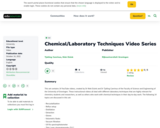
This set contains 14 YouTube videos, created by Dr Niek Eisink and Dr Tjalling Canrinus of the Faculty of Science and Engineering of the University of Groningen. These instructional videos all deal with different laboratory techniques that are highly relevant for chemistry students and researchers, as well as others who work with chemical techniques in their day-to-day work. The following 14 topics are discussed in this set:
- Recrystallization
- Reflux setup
- Distillation
- Extraction
- Gloves
- Volumetric flasks
- Vacuum filtration
- UV-Vis spectrophotometer
- Thin Layer chromatography (TLC)
- Column chromatrography
- Schlenk line
- Greasing glass joints
- Micropipettes
- Rotary evaporator
The videos aim to be useful tools for current students and staff, professionals who are looking for a refresher on fundamental laboratory techniques, and other educators who want use these videos in their teaching and lab instruction.